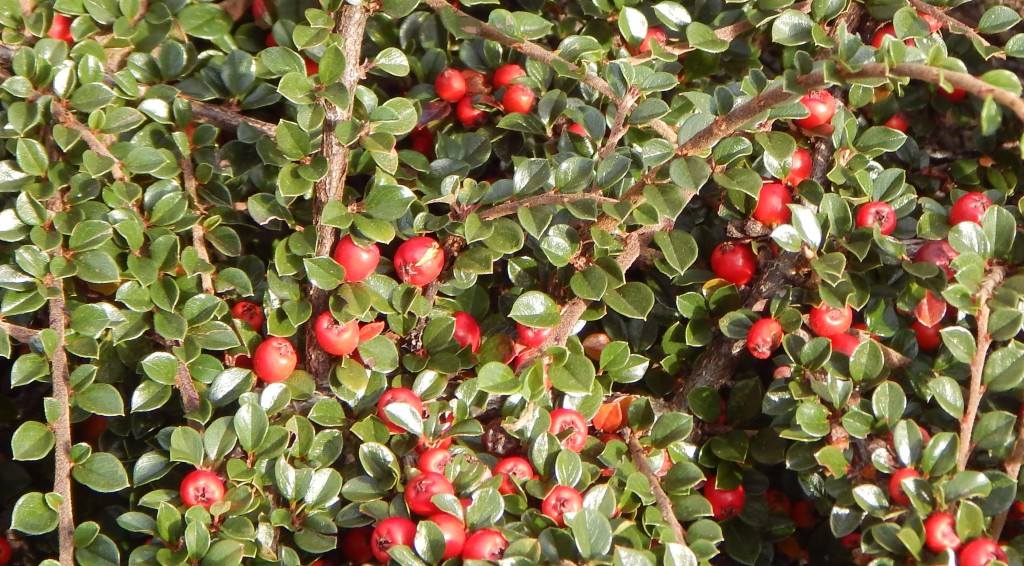
[101] Cotoneaster horizontalis, Wall Cotoneaster
Introduction
Cotoneaster horizontalis, Wall Cotoneaster (or sometimes just Cotoneaster), is a well-known shrub grown for ground cover or wall cover or as a low hedge, generally known for its masses of red berries.
I will consider Cotoneaster species and varieties in general but will leave the larger species until tomorrow.
Taxonomy
Kingdom – Plants
Division – Vascular Plants
Class – Angiosperms (Flowering Plants)
Order – Rosales
Family – Rosaceae
Subfamily – Amygdaloideae
Tribe – Maleae
Subtribe – Malinae
Genus – Cotoneaster
Scientific Name – Cotoneaster horizontalis
Within the genus Cotoneaster there are many other species, hybrids and cultivars.
Name
Cotoneaster comes from cotoneum, Latin for the Quince.
Description
The family Rosaceae has about five thousand species. If we go down through subfamily and tribe to the subtribe Malinae, there are still about a thousand species in thirty genera including [103] Hawthorn, Quince, [220] Apple, Pear, [285] Firethorn, [260] Photinia, [320-321] Rowans, and Cotoneaster. All the species in the subtribe Malinae (and only these species) produce a particular type of fruit called a pome.
[Fruits of plants provide wide areas of semantic ambiguity and there is little correspondence between the botanical definition of the word ‘berry’ and its informal use. Some of the things that we call berries are accepted as berries by botanists; some are drupes; some are either berries or drupes; and some are pomes. To add to the confusion there are many botanical berries, drupes and pomes that are not normally considered to be berries. The botanical definitions depend on structural differences that we may not notice and on the developmental history of the fruit from the flower. If we stick to the informal definition of a berry as a small colourful fruity seed, then apples are apples, pears are pears, and most other pomes are berries!]
There are from about a hundred to perhaps three hundred species of Cotoneaster. The situation is complex because there are many hybrids of uncertain origin.
They come from all over temperate Europe and Asia, and northern Africa, with a concentration of species coming from the mountains of China and the Himalayas.
They vary from low-lying prostrate plants through shrubs to trees and we will leave the trees until tomorrow. Most varieties have simple small leaves.

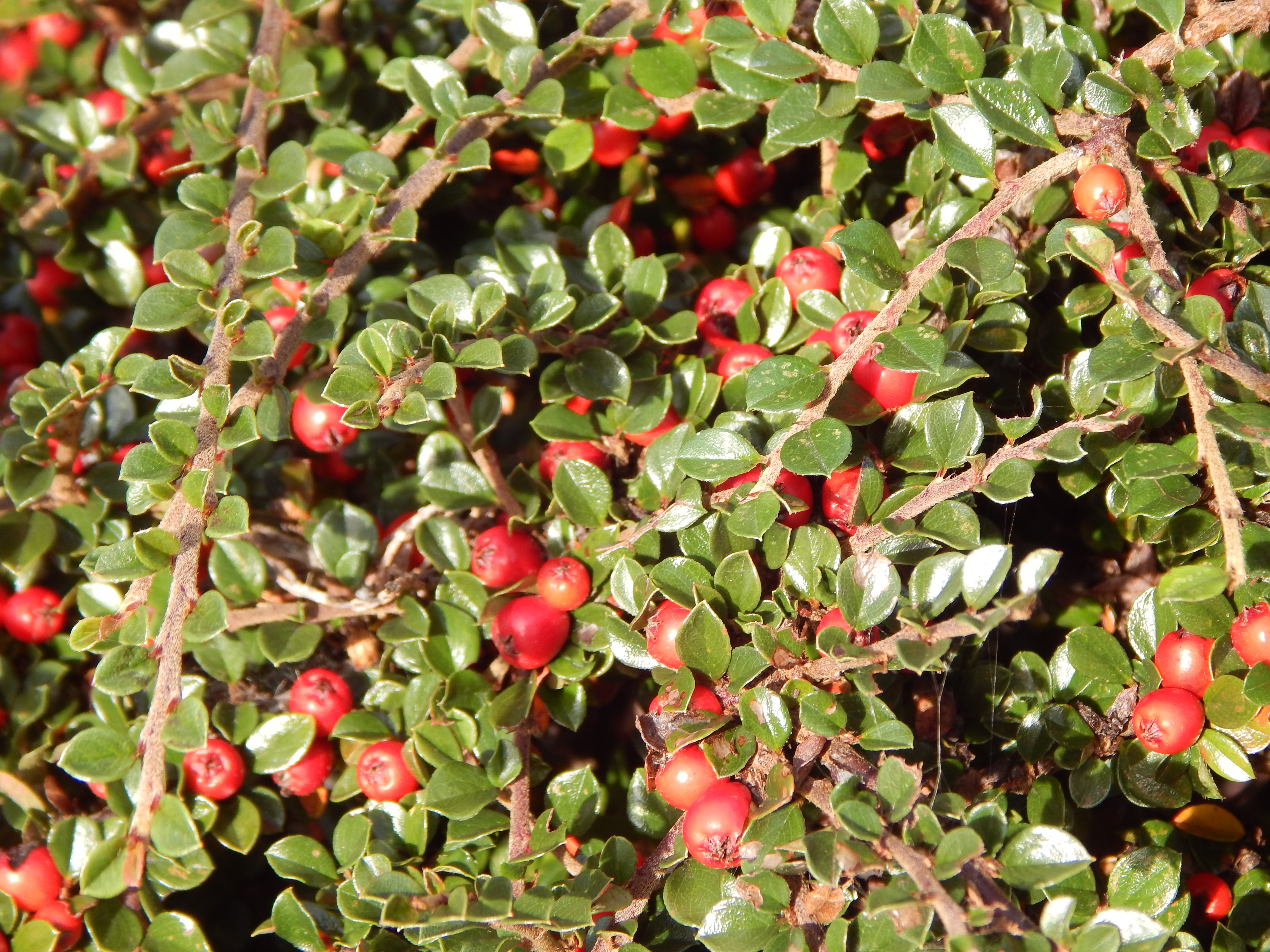

They are generally seen covered with small red berries that stay on the plant all winter. (Yes, I know they are really pomes.)
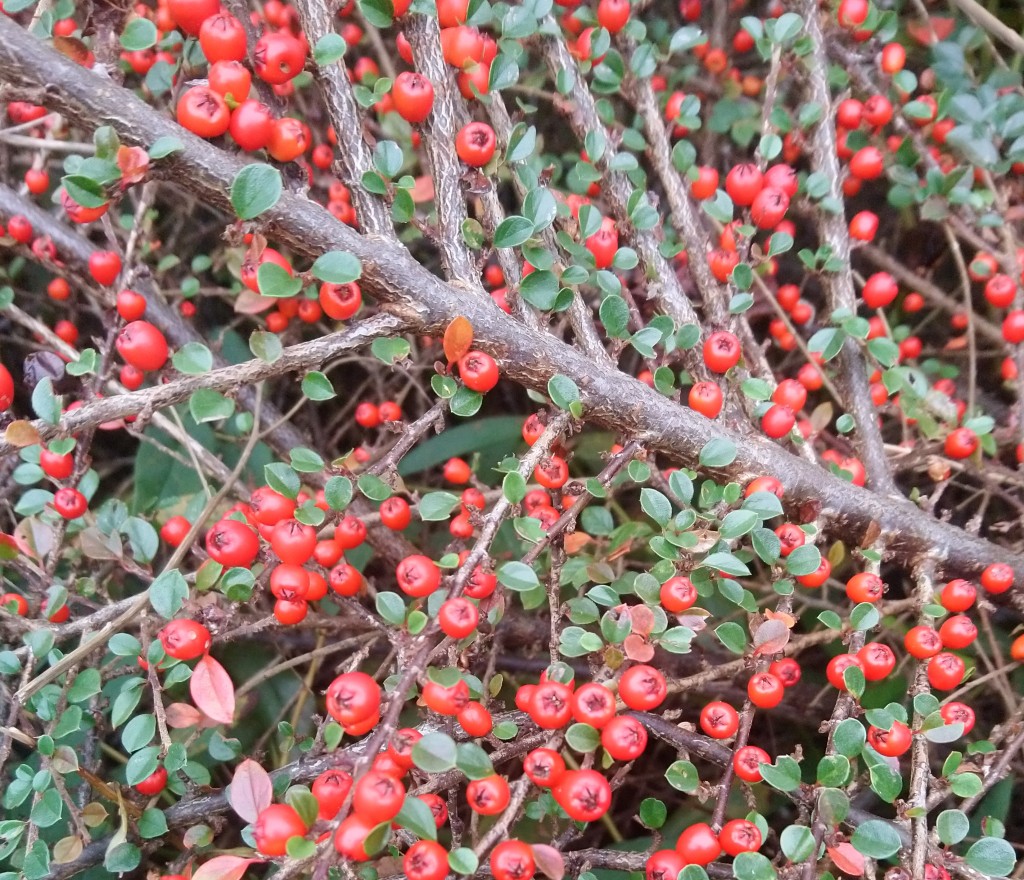
Habitat and use
Cotoneaster horizontalis is widely cultivated as a very low ground-cover or hedge plant. As its name suggests is often allowed to grow up the side of walls.
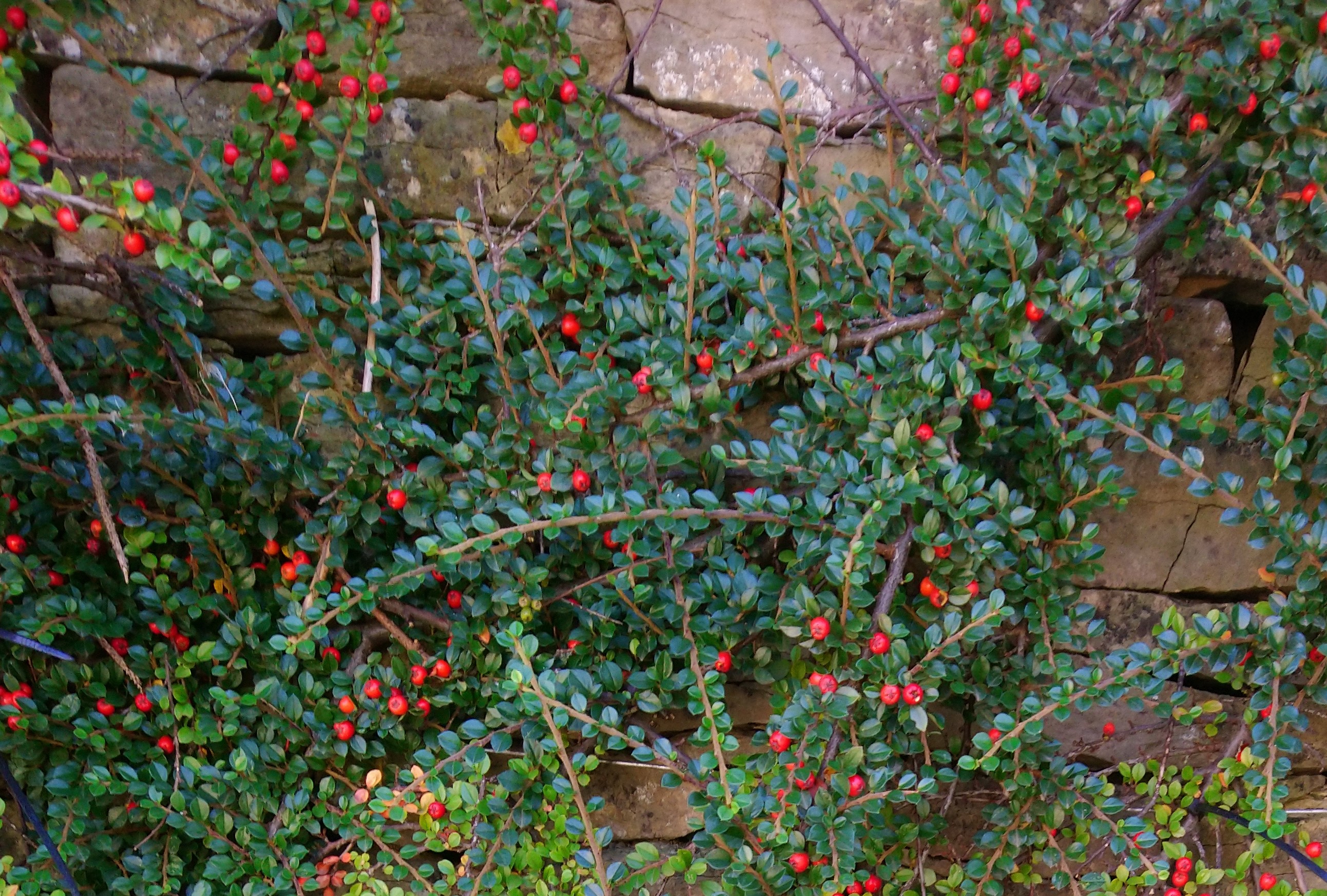
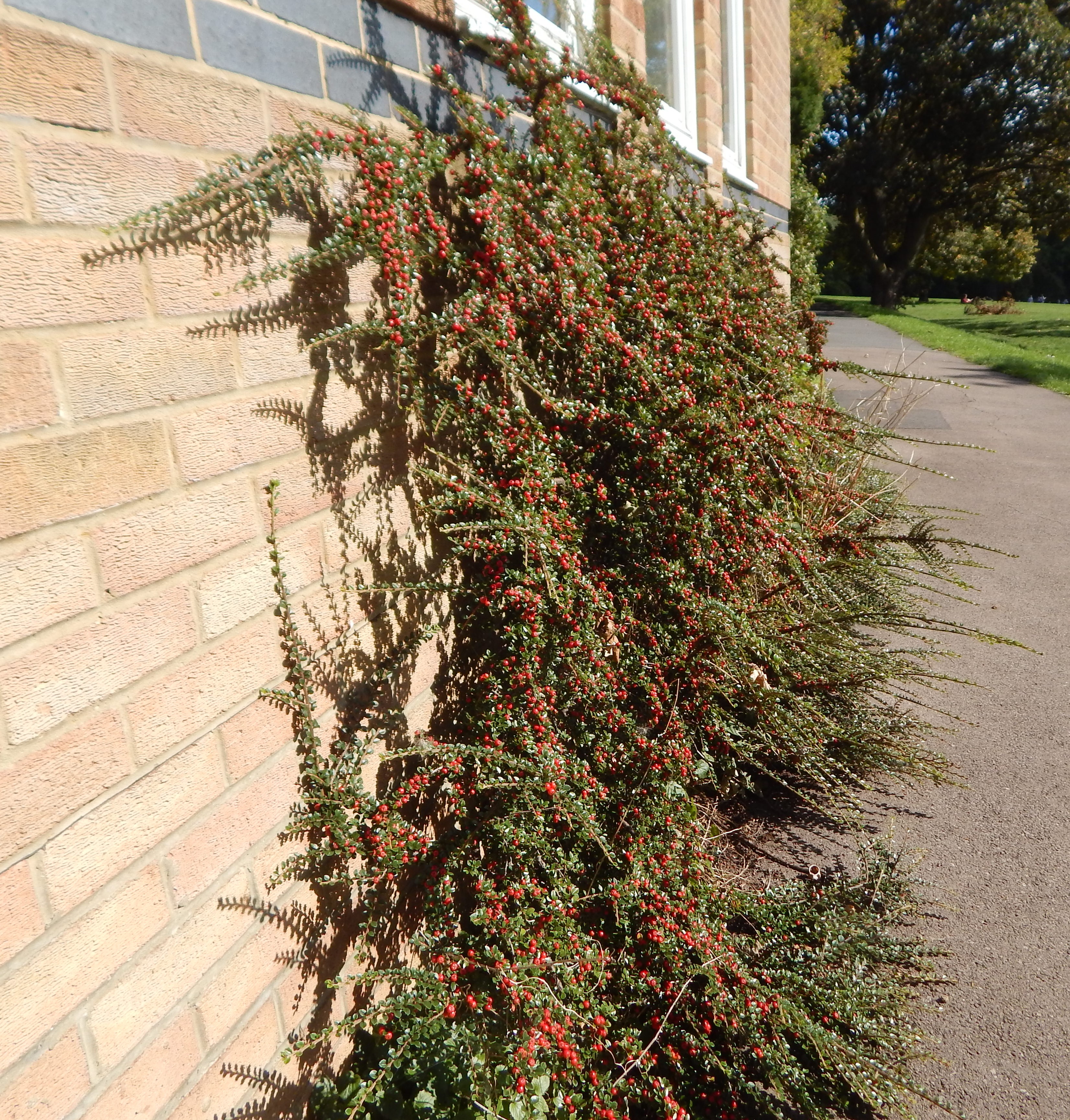

Other Notes
The prostrate varieties only get to a significant height by leaning on walls or like this:
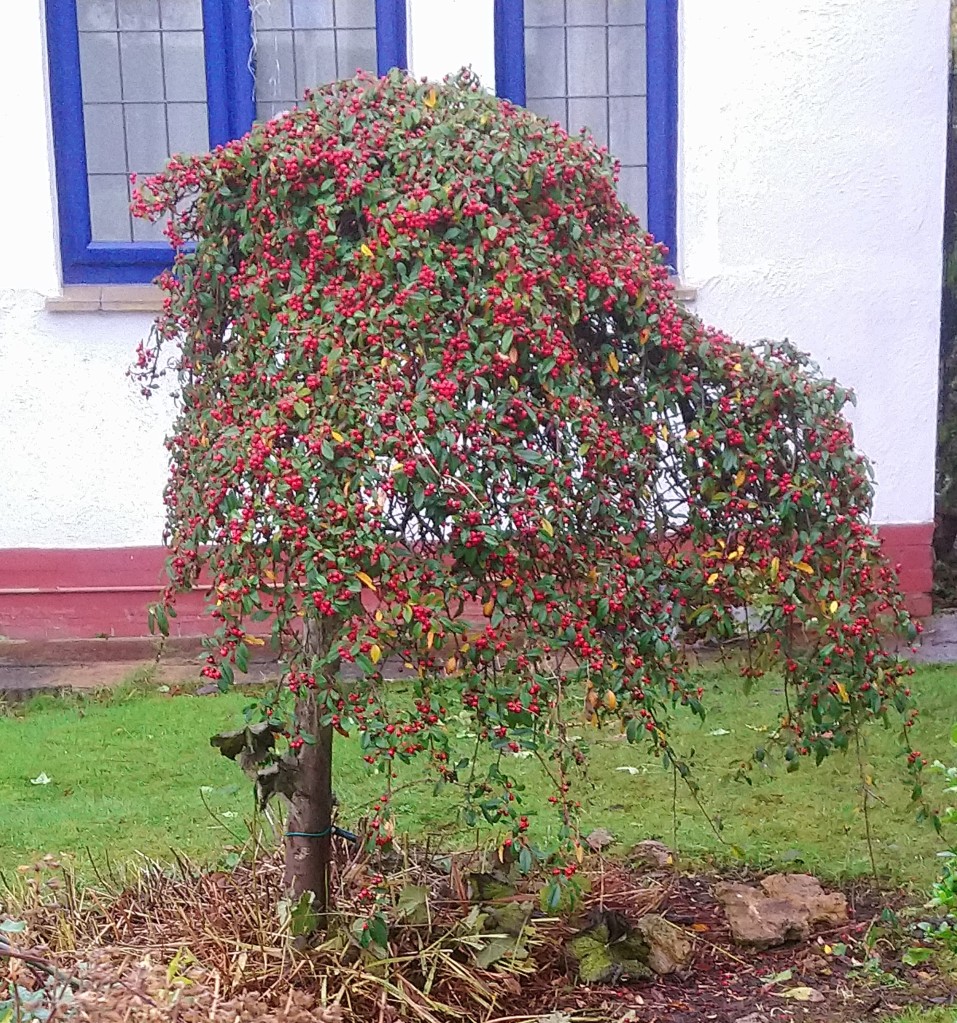
I recognized this because we used to have something like it in our garden. It’s something like Cotoneaster horizontalis, growing horizontally and even falling away below the horizontal – grafted on to the trunk of another tree species. Ornamental plants are often grafted on to another species as a root stock and here it almost makes it look like a tree.
See also
Cotoneaster pannosus, Silverleaf Cotoneaster, is another species native to China. It is a small, sprawling shrub with attractive silvery leaves, somewhat larger that Cotoneaster Horizontalis.
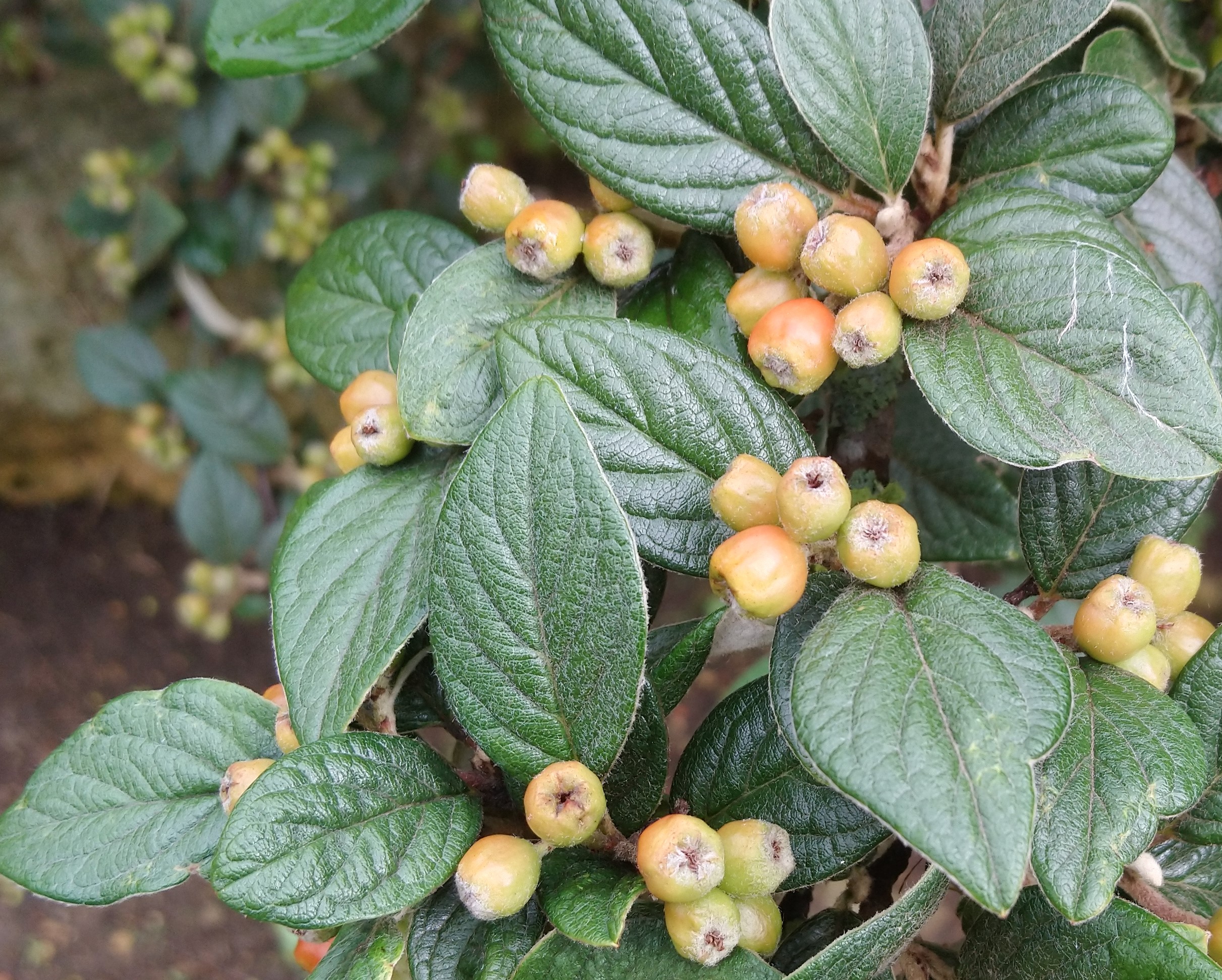

We will meet more Cotoneaster tomorrow.
I have given some clues above about some related species.

Pingback: [220] Malus domestica, Apple | The Species of Britain
Pingback: [260] Photinia x fraseri, Red-tip Photinia | The Species of Britain
Pingback: [286] Pyracantha coccinea, Firethorn | The Species of Britain
Pingback: [320] Sorbus aria, Whitebeam | The Species of Britain